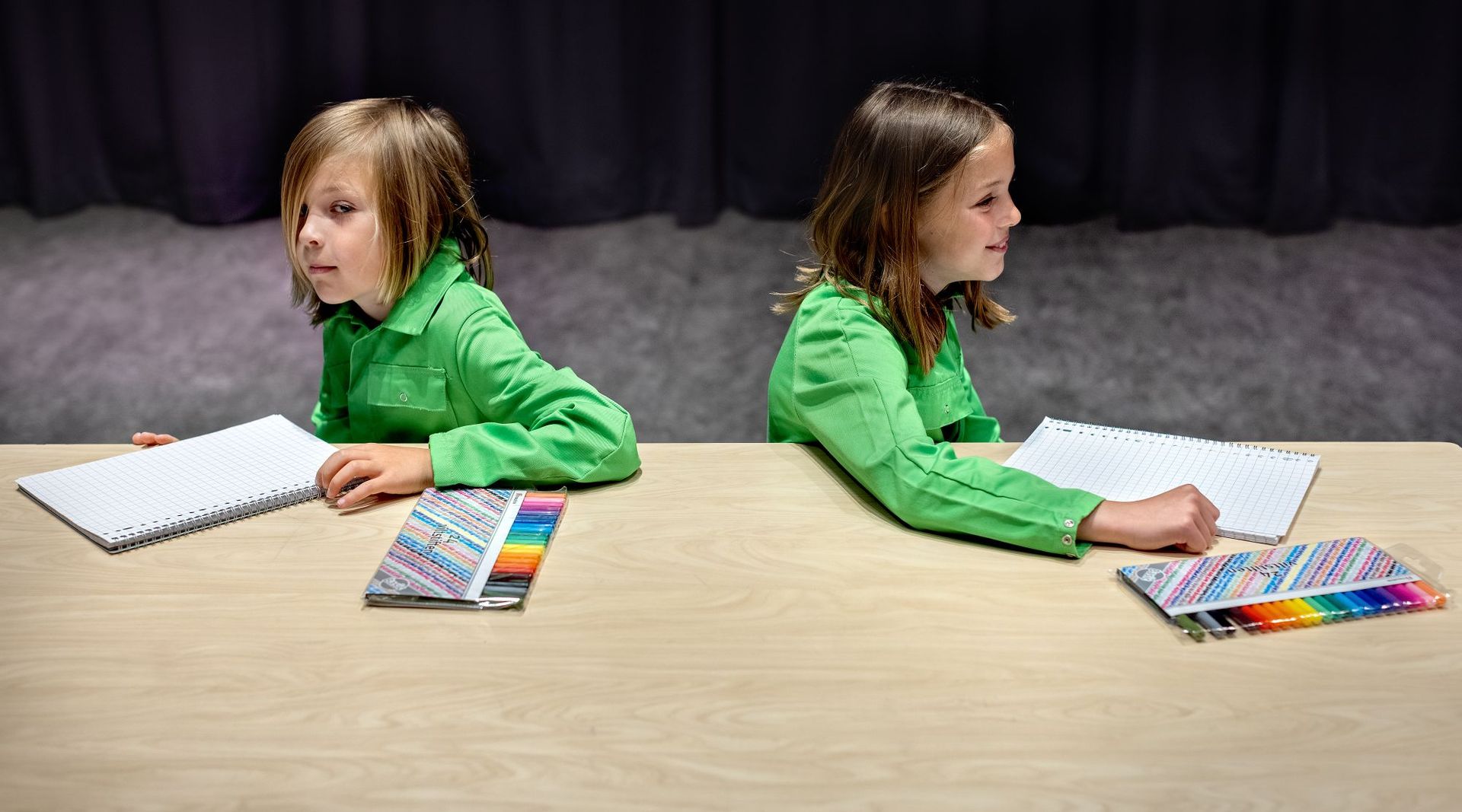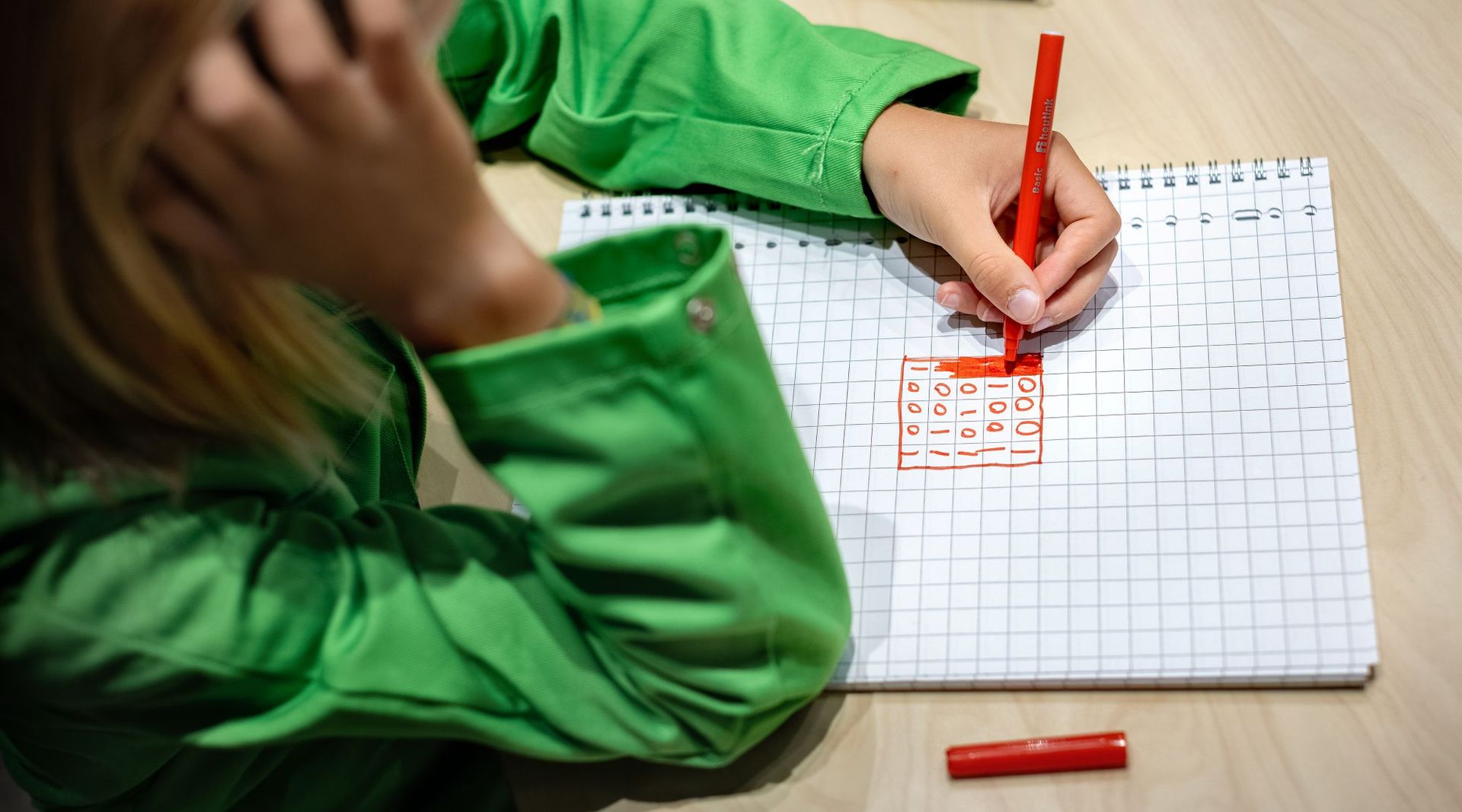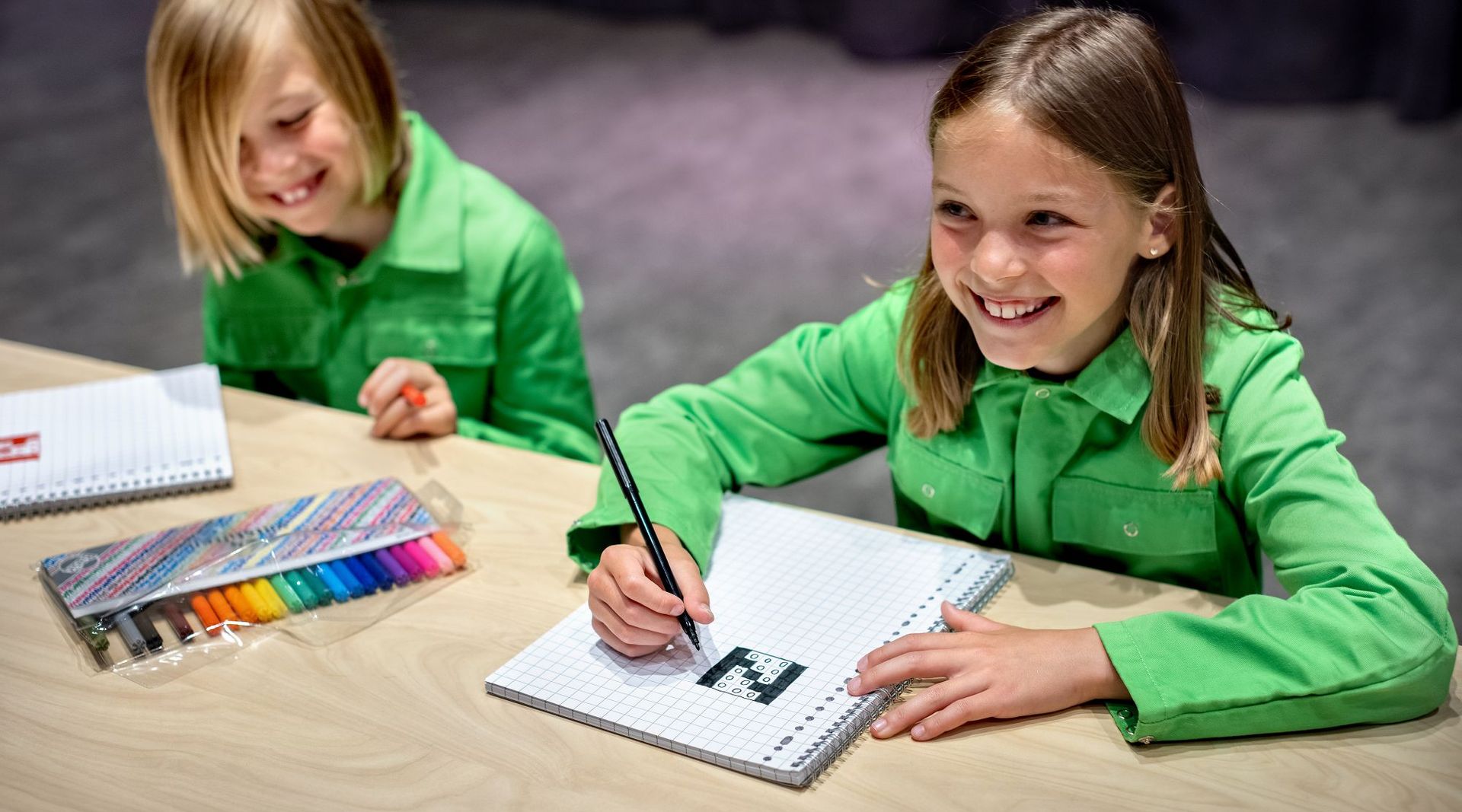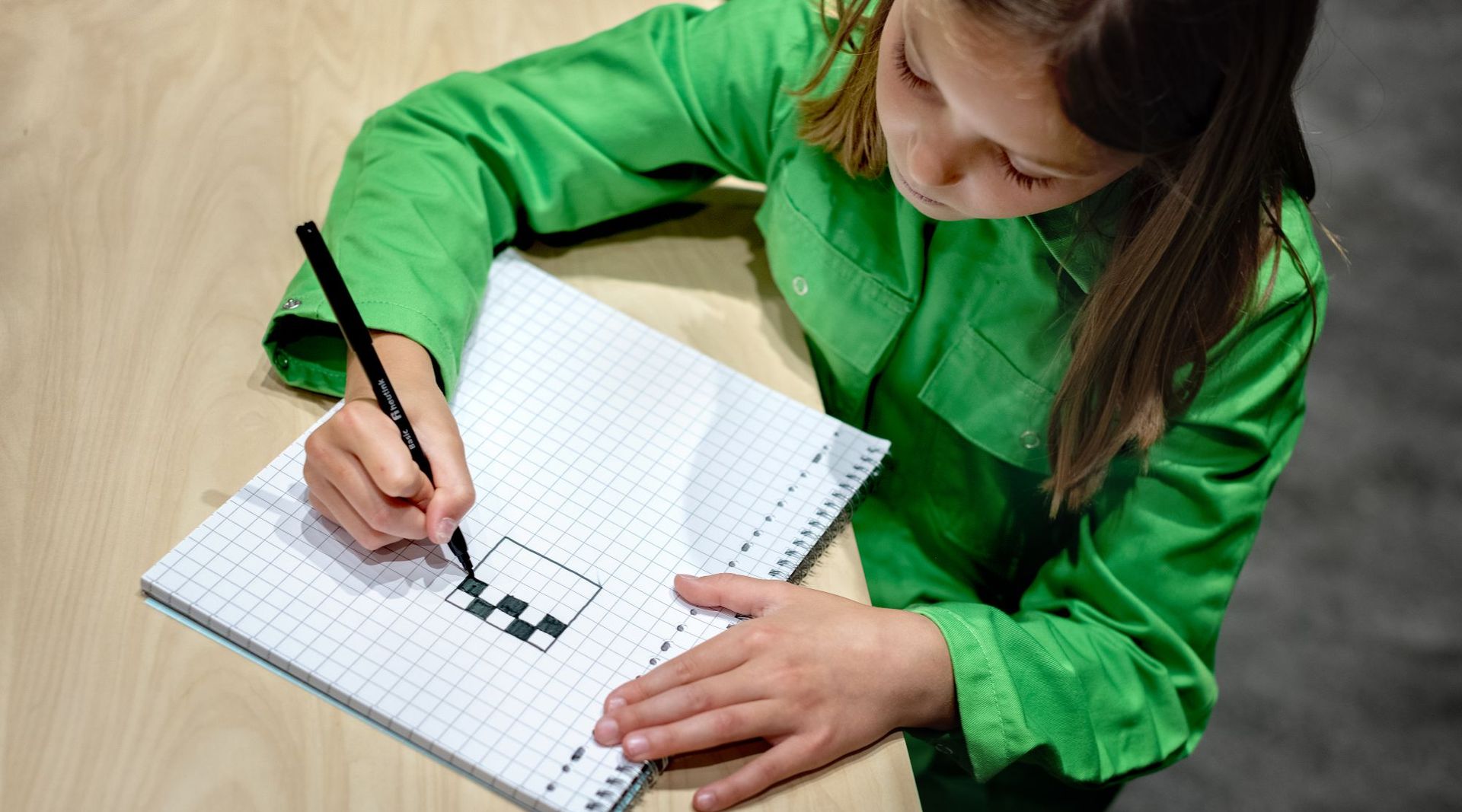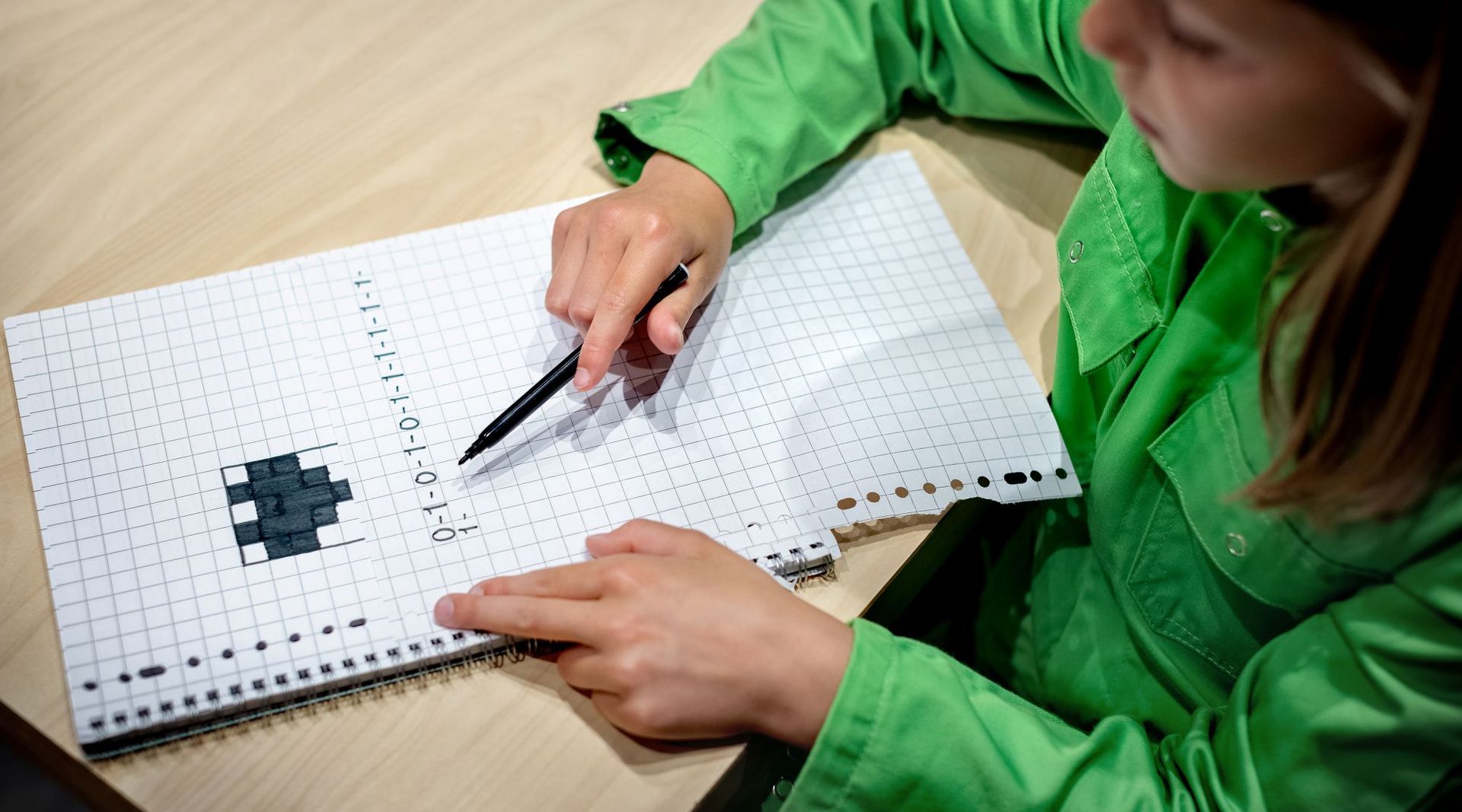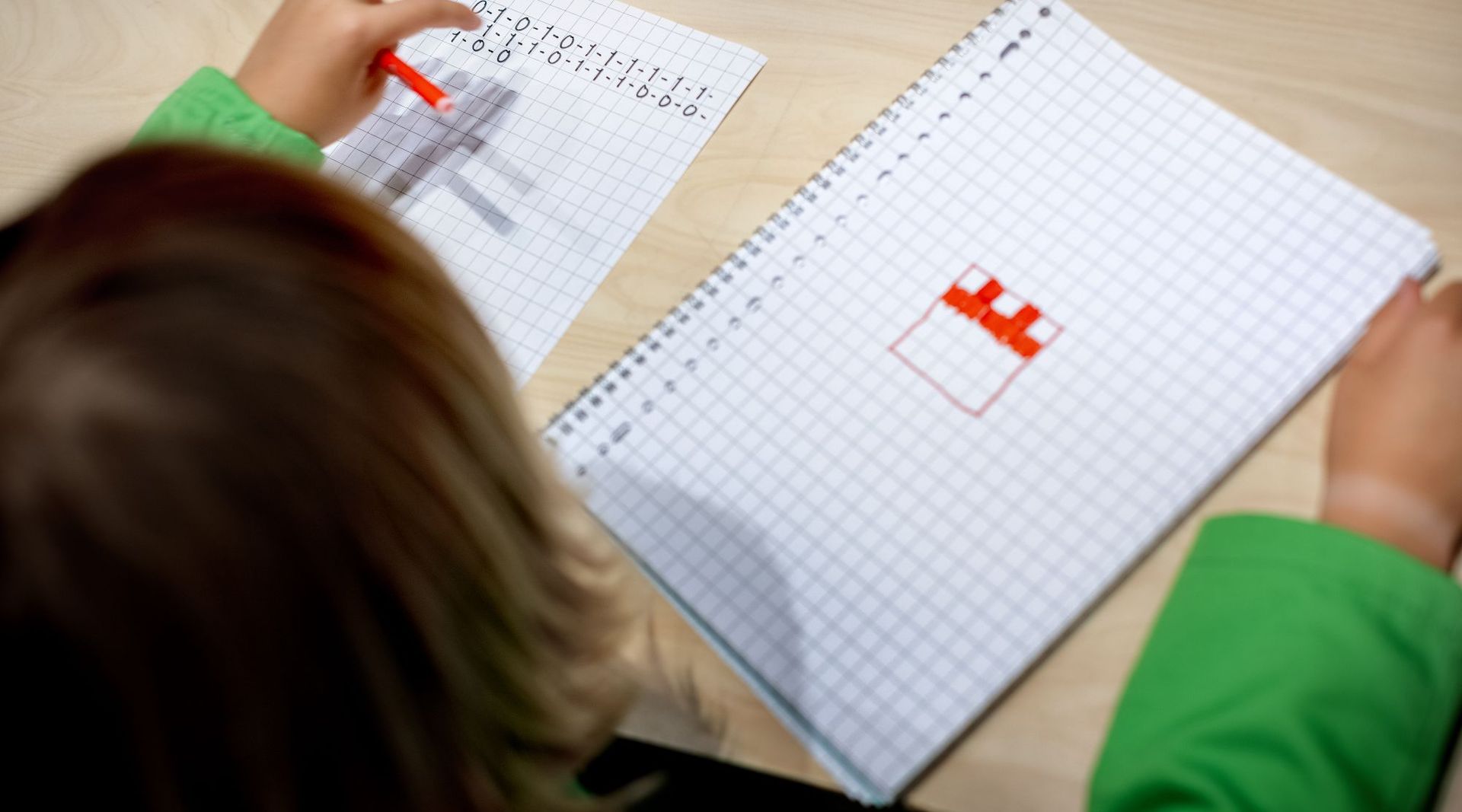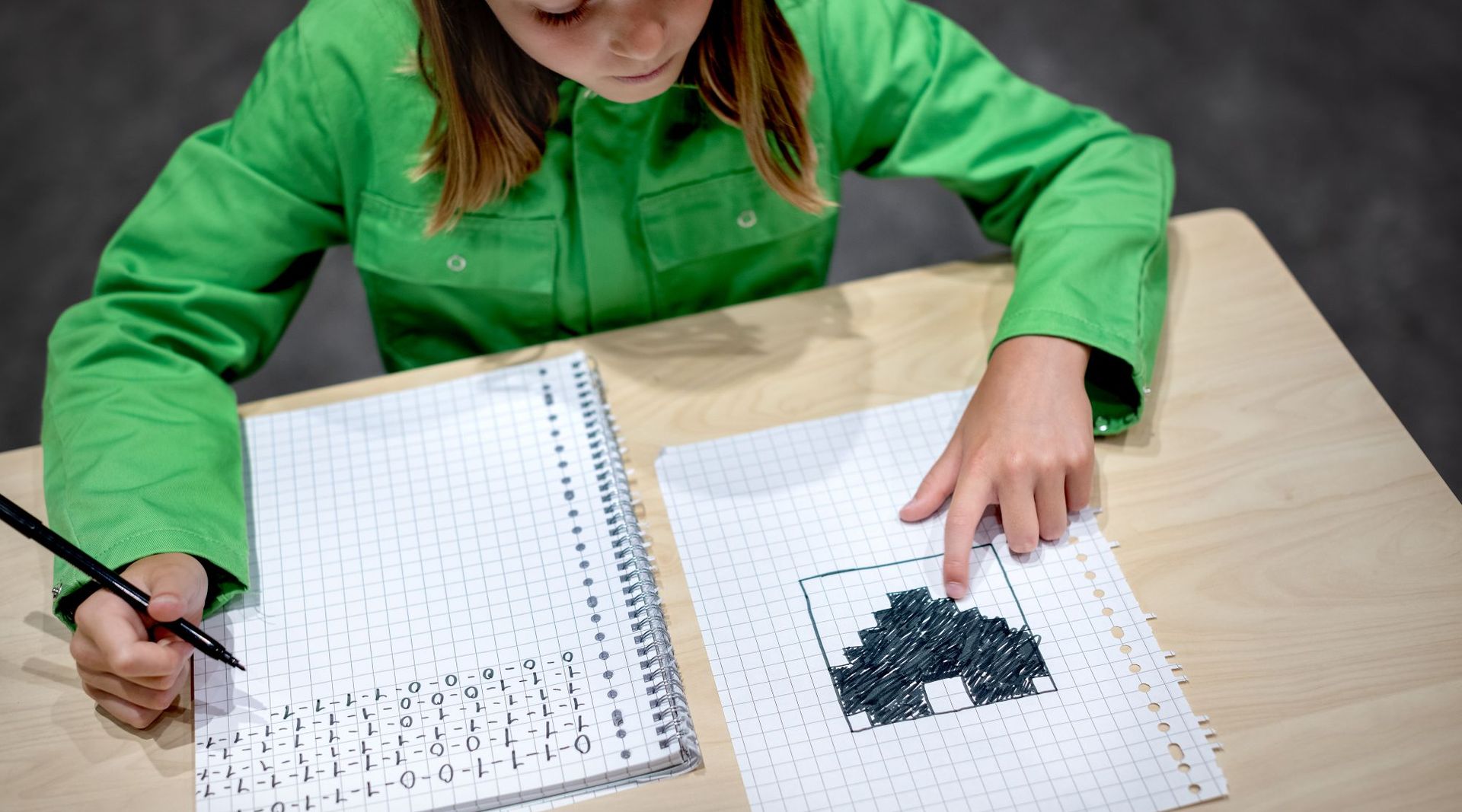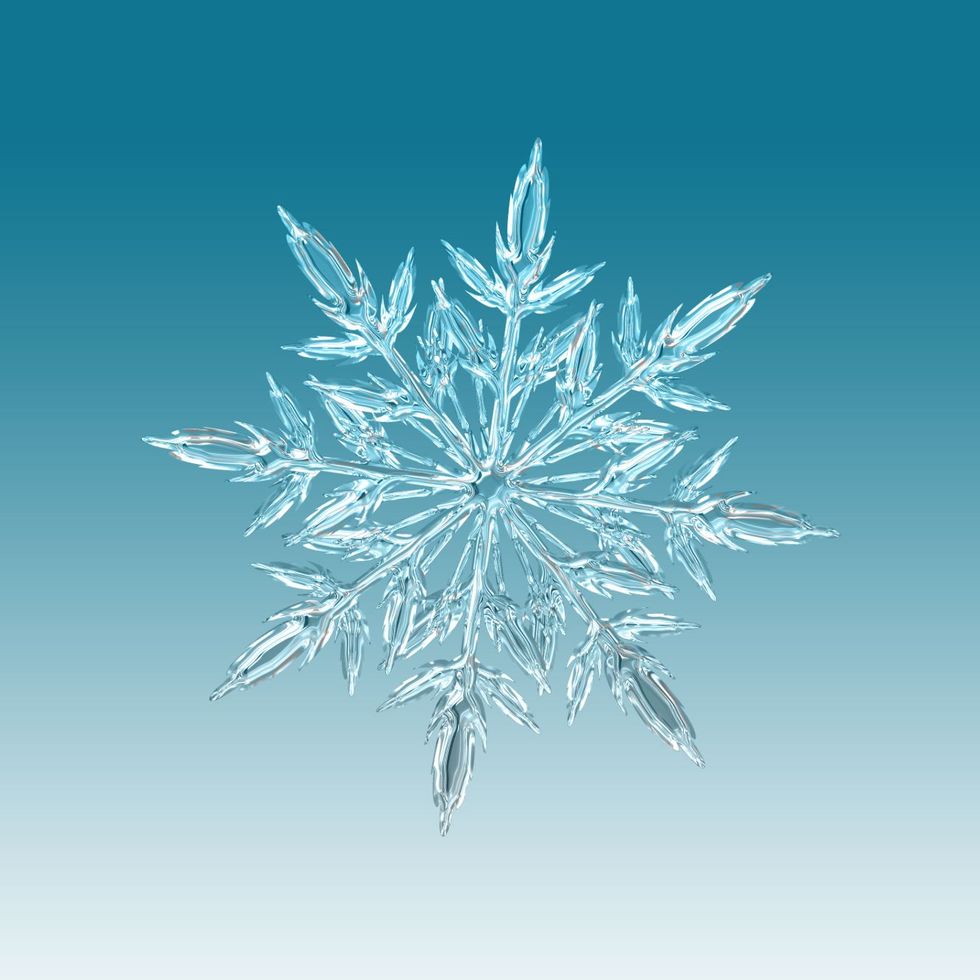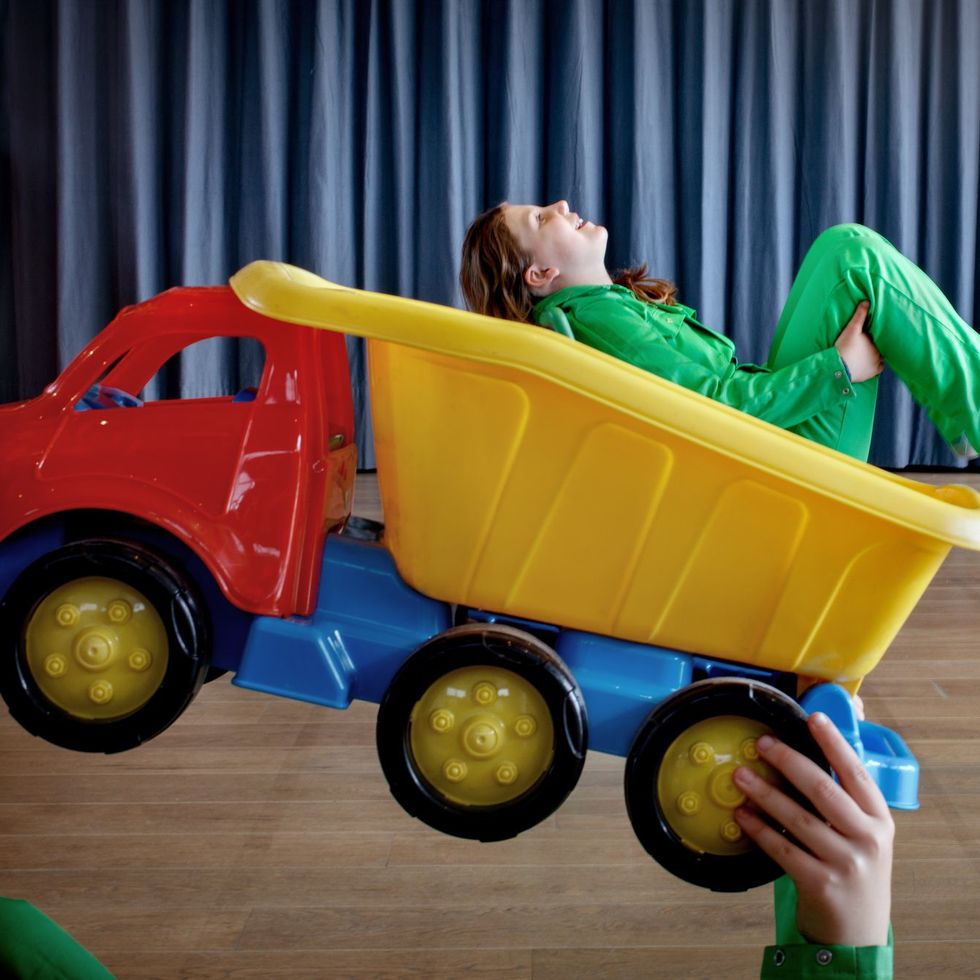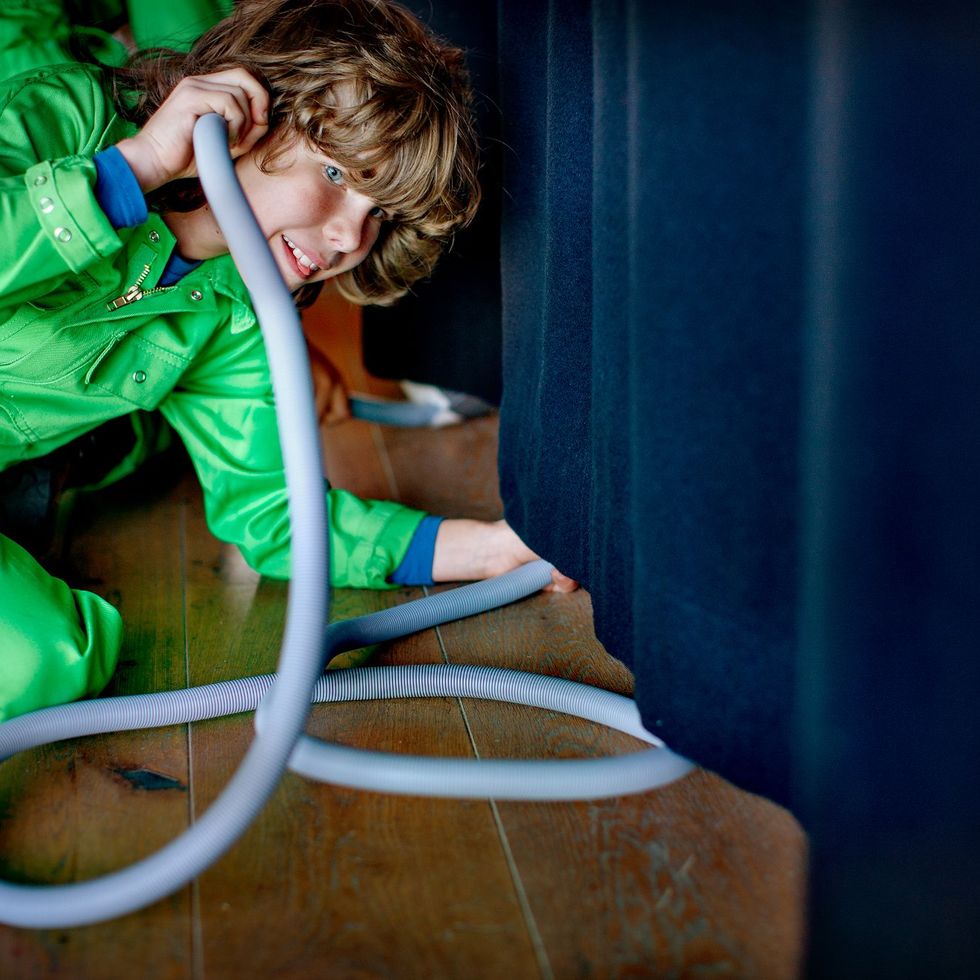Encode your drawing
Computers use a special code in the form of zeros and ones to store and process information, such as text and images. In this experiment, you will use these numbers to encode drawings.
Graph paper
A coloured marker
Someone to play the game with
Get started
What did you discover?
You did it! You passed on information in code! A code is like a secret language: you need to know how the code works to understand the message. Computers use code too. They work using binary code, which means they only read the difference between a 0 and a 1. And that’s the code you used for your picture.
